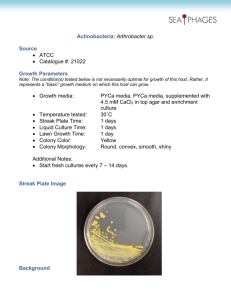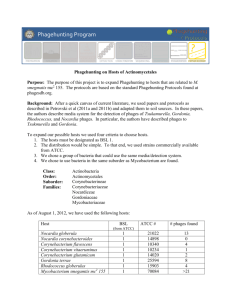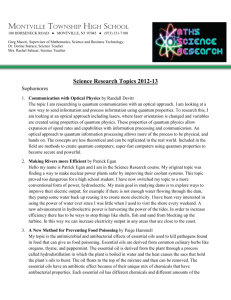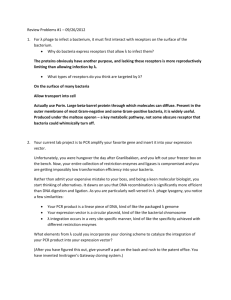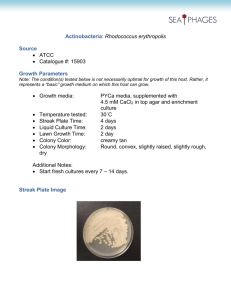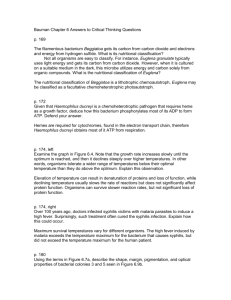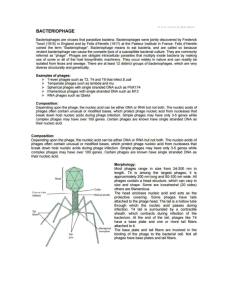ArthrobacterGrowingConditions
advertisement
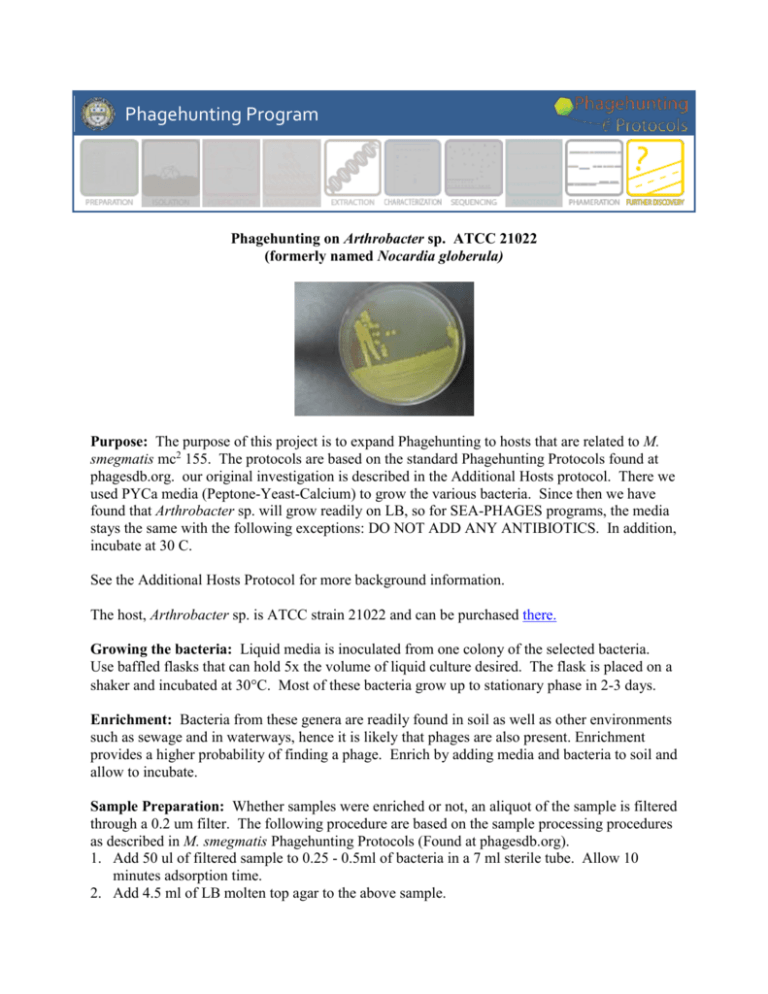
Phagehunting Program Phagehunting on Arthrobacter sp. ATCC 21022 (formerly named Nocardia globerula) Purpose: The purpose of this project is to expand Phagehunting to hosts that are related to M. smegmatis mc2 155. The protocols are based on the standard Phagehunting Protocols found at phagesdb.org. our original investigation is described in the Additional Hosts protocol. There we used PYCa media (Peptone-Yeast-Calcium) to grow the various bacteria. Since then we have found that Arthrobacter sp. will grow readily on LB, so for SEA-PHAGES programs, the media stays the same with the following exceptions: DO NOT ADD ANY ANTIBIOTICS. In addition, incubate at 30 C. See the Additional Hosts Protocol for more background information. The host, Arthrobacter sp. is ATCC strain 21022 and can be purchased there. Growing the bacteria: Liquid media is inoculated from one colony of the selected bacteria. Use baffled flasks that can hold 5x the volume of liquid culture desired. The flask is placed on a shaker and incubated at 30C. Most of these bacteria grow up to stationary phase in 2-3 days. Enrichment: Bacteria from these genera are readily found in soil as well as other environments such as sewage and in waterways, hence it is likely that phages are also present. Enrichment provides a higher probability of finding a phage. Enrich by adding media and bacteria to soil and allow to incubate. Sample Preparation: Whether samples were enriched or not, an aliquot of the sample is filtered through a 0.2 um filter. The following procedure are based on the sample processing procedures as described in M. smegmatis Phagehunting Protocols (Found at phagesdb.org). 1. Add 50 ul of filtered sample to 0.25 - 0.5ml of bacteria in a 7 ml sterile tube. Allow 10 minutes adsorption time. 2. Add 4.5 ml of LB molten top agar to the above sample. 3. Pour entire sample on a labeled LB agar plate. 4. Allow to cool. 5. Invert. Incubate at 30C . You will have a bacterial lawn in 1 day, but may want to wait for 2 -3 more days to allow the bacterial growth to continue. 6. Observe for plaques. Once found, follow subsequent protocols found at phagesdb.org. Notes: These abbreviated protocols are furthered explained in the Collecting & Screening Soil Samples Protocol found at phagesdb.org. To date, we have routinely enriched samples in a variety of ways. Using various amounts of media, bacteria, and soil, we have incubated the samples for > 3 days. All enriched samples are autoclaved prior to disposal. When growing the bacteria, clumping can be an issue, so Tween can be added in the initial culture from a single colony. Tween is omitted when growing cultures for plating for phage. Anti-bubble can be added to the agar preparations to avoid bubble formation (desirable). Plaque Morphology Examples Arthrobacter phage Jawnski Arthrobacter phage Wayne Arthrobacter phage Korra Virion Particle Morphology Examples Arthrobacter phage Jawnski Arthrobacter phage Wayne Arthrobacter phage Korra
